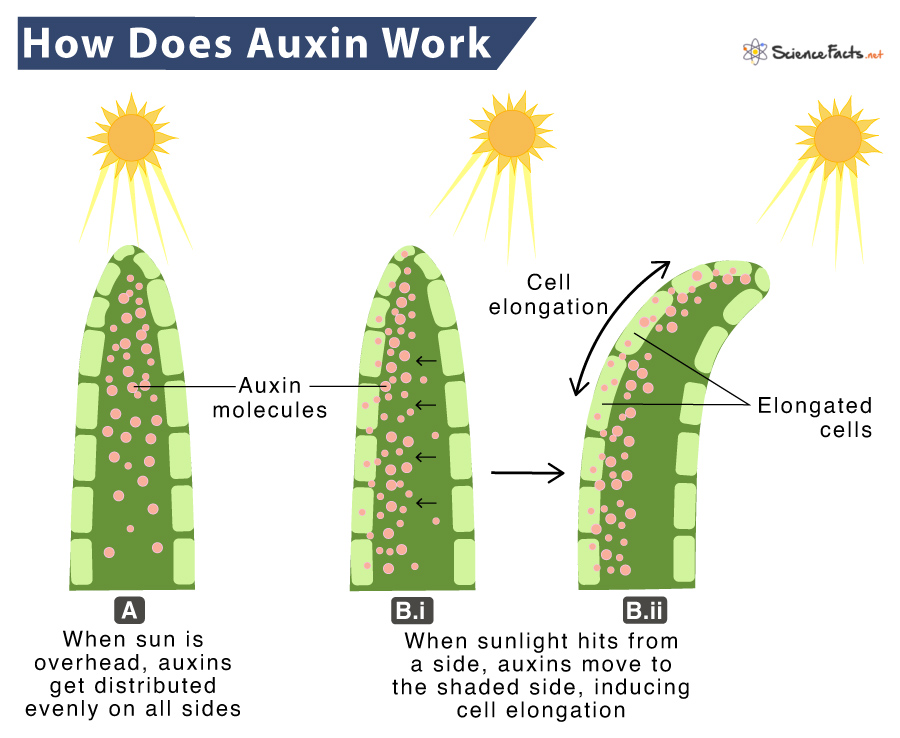Auxin
An auxin is a group of growth hormones found in all plant tissues in varying concentrations. The name of this class of hormone comes from the Greek word ‘auxein‘, which means ‘to grow’ or ‘increase’.
It was the first significant plant hormone to be discovered. In an experiment in the early 1880s, Charles Darwin and his son Francis observed that canary grass coleoptiles bend towards the light source when light is introduced from one direction. Based on the works of Darwin, in 1928, Dutch botanist Fritz Went showed that this bending of light was promoted by a hydrophilic mobile signal which he isolated from an oat coleoptile. He named this substance auxin.
Where is it Produced
Auxin is produced in the apical meristem, a type of plant tissue present in the tips of roots and shoots. From there, it diffuses to other parts of roots, shoots, leaves, buds, and flowers.
Chemical structure
The hormone is naturally synthesized in plants in the form of Indole-3-acetic acid (IAA). It is a carboxylic acid-containing indole ring, having a structure similar to the amino acid, tryptophan. Some more examples auxin are 4-Chloroindole-3-acetic acid (4-Cl-IAA) and Phenylacetic acid (PAA).
Apart from these natural auxins, some chemicals have been produced synthetically, showing activities similar to IAA. Naphthalene acetic acid (NAA), 2,4-Dichlorophenoxyacetic acid (2,4-D), and Indole-3-butyric acid (IBA) are some of the synthetic auxins.
How Does Auxin Work
During phototropism, auxin molecules migrate towards the shaded side of the plant. This greater accumulation of auxin on the darker side causes the cells to elongate, making the shoot tips bend towards the light.
On the other hand, during geotropism, more auxin molecules gather in the lower side of the stem, sensing gravity. The lower part of the stem grows against gravity, resulting in the upright positioning of the plant.
Functions
- Helps in plant growth: Auxin stimulates cell elongation in shoots, thus helping the plant to grow. It promotes the growth of the main stem and suppresses the growth of lateral branches, a process known as apical dominance.
- Inhibits abscission: It prevents abscission, that is, the premature falling of leaves, flowers, and fruits.
Commercial Applications
- Auxin develops transgenic seedless variants of fruits without fertilization (parthenocarpy), such as tomato, strawberry, and eggplant. The hormone is also sprayed on these fruits to make them grow larger than usual. This process of producing seedless fruits is called parthenocarpy.
- Synthetic auxins act as good pesticides and herbicides, as they increase the metabolic rate of those plants.
- For asexual propagation, another synthetic auxin, NAA, is used to initiate quick root formation in stem cuttings and tissue culture.
-
References
Article was last reviewed on Friday, February 17, 2023





